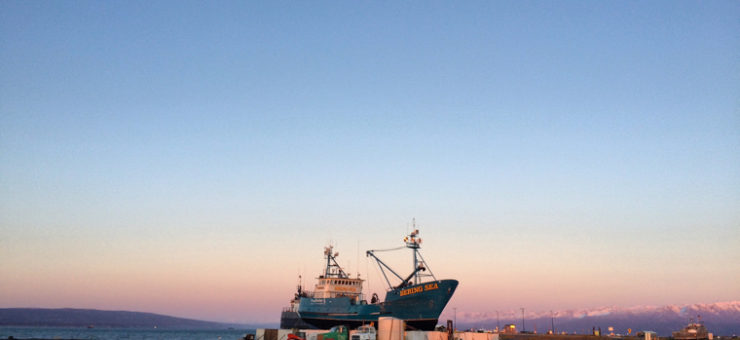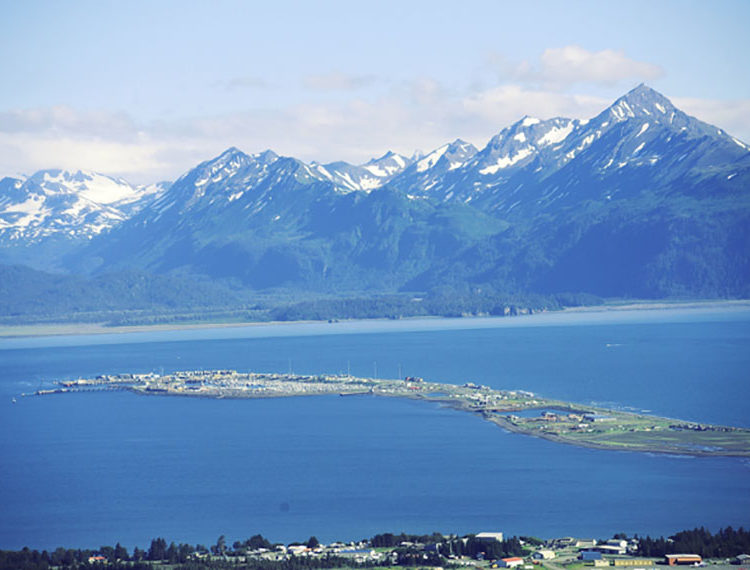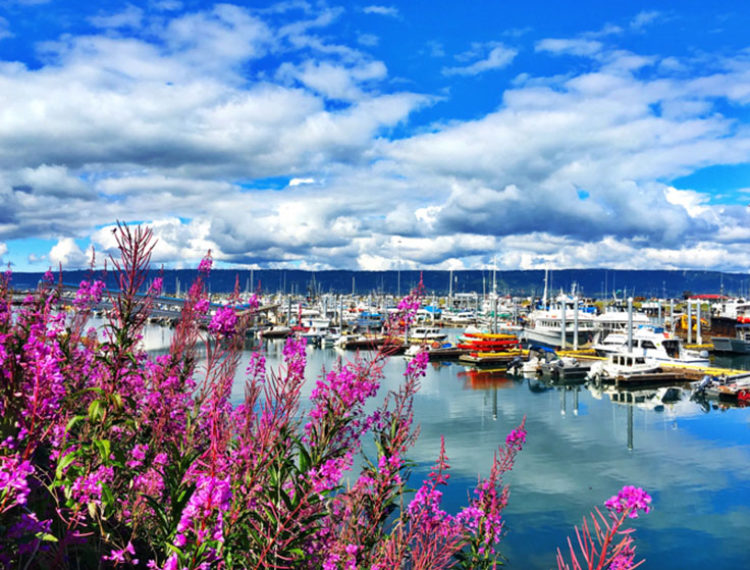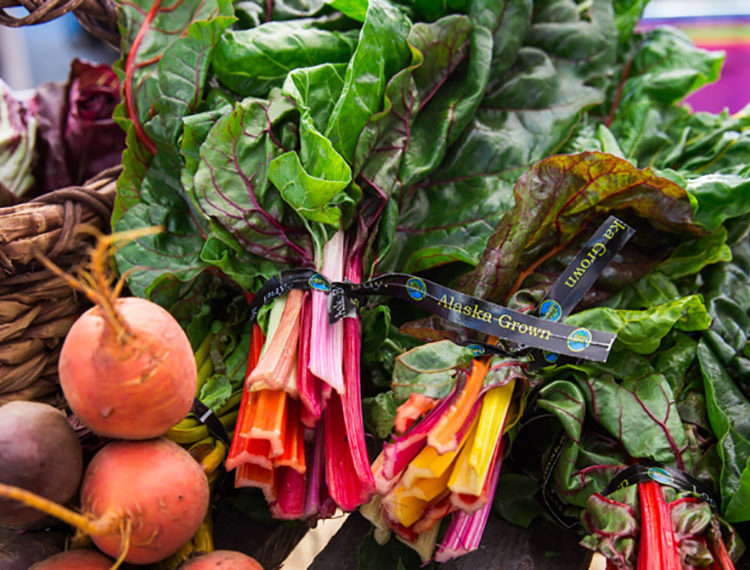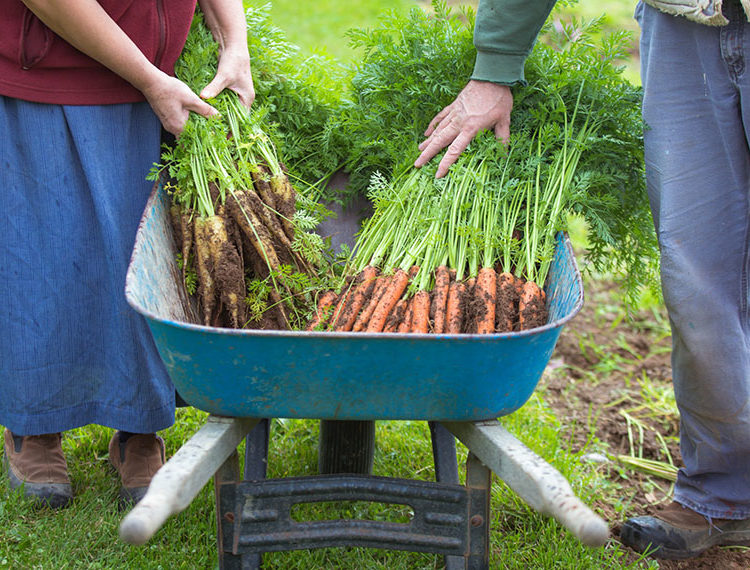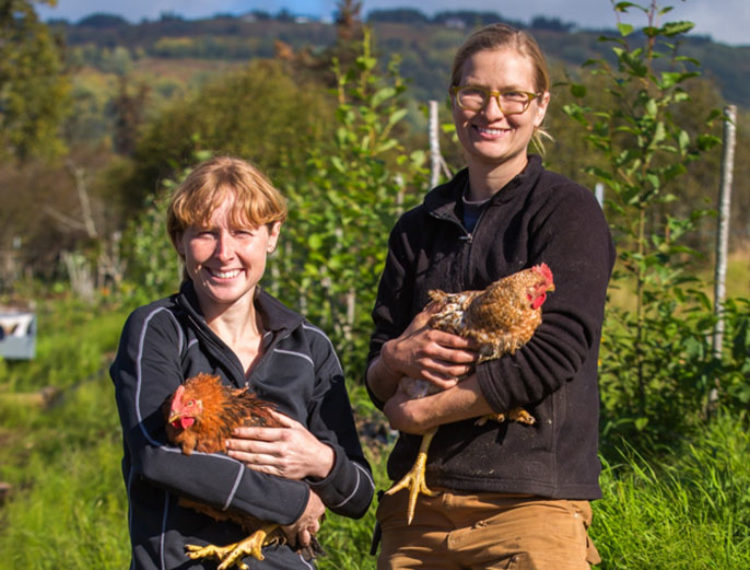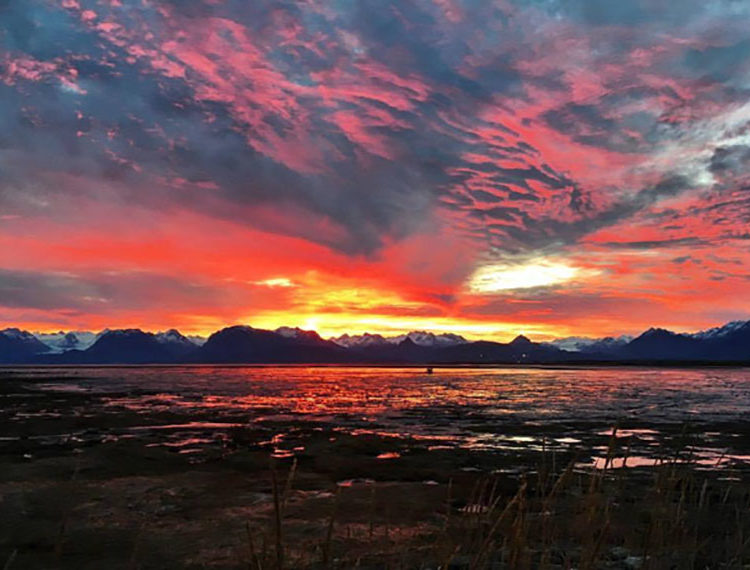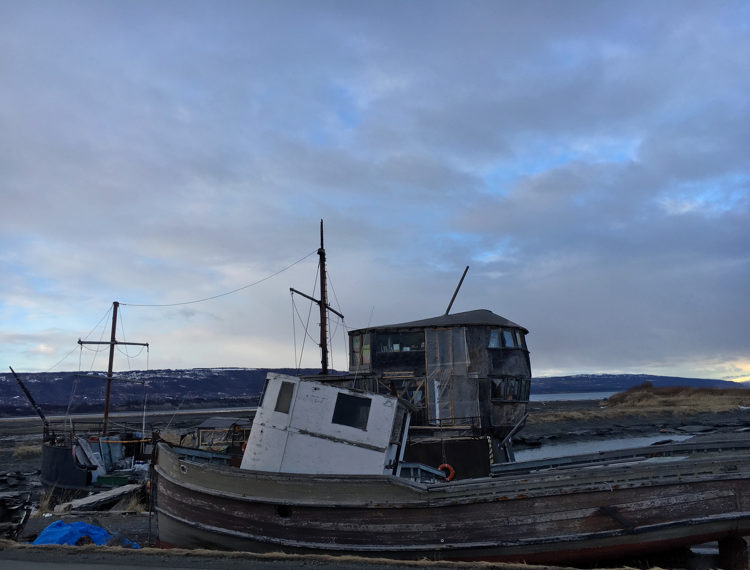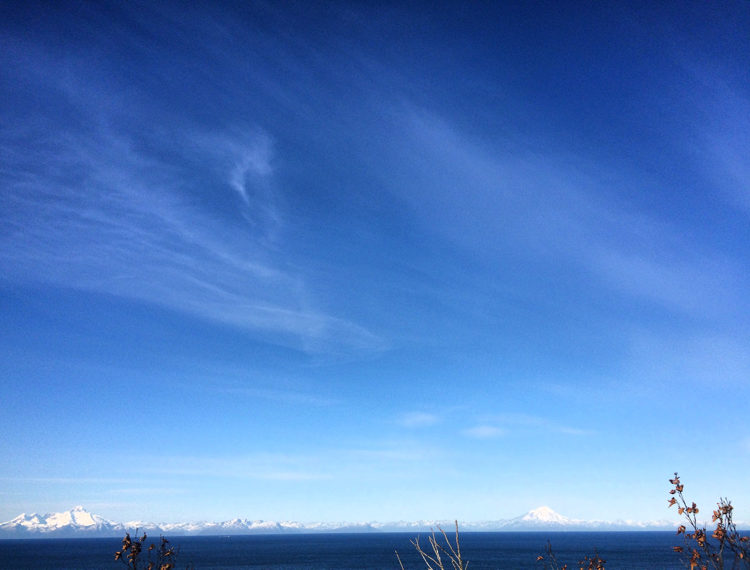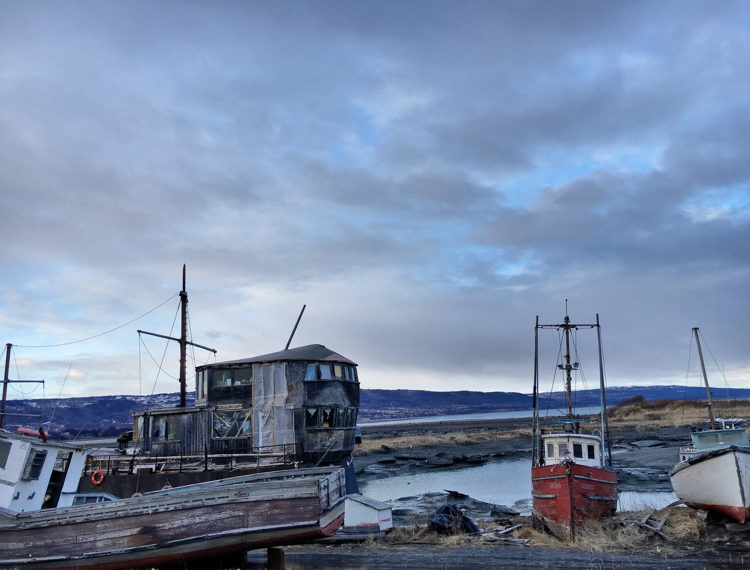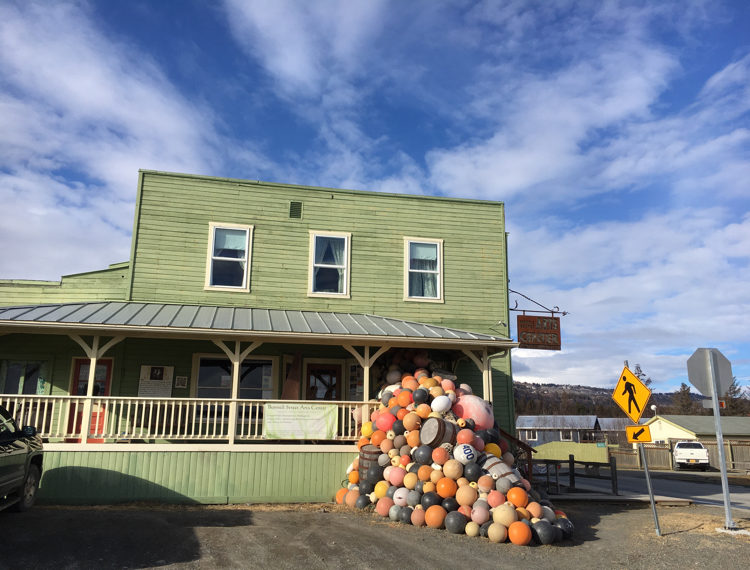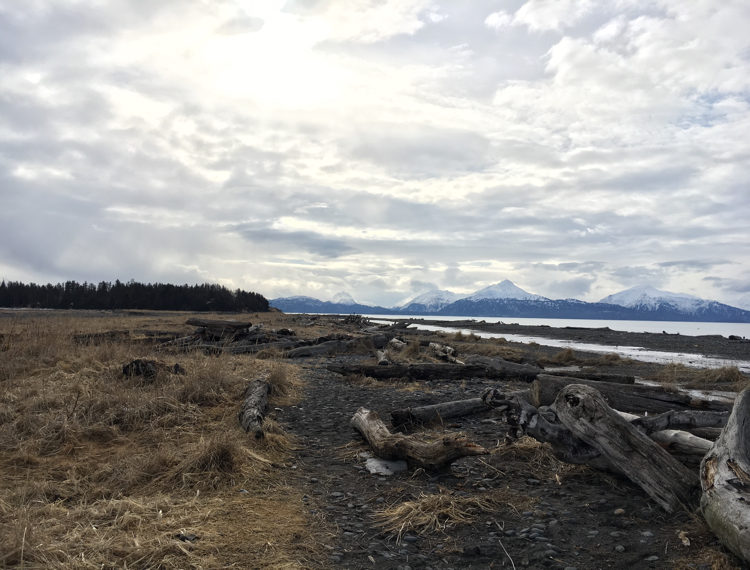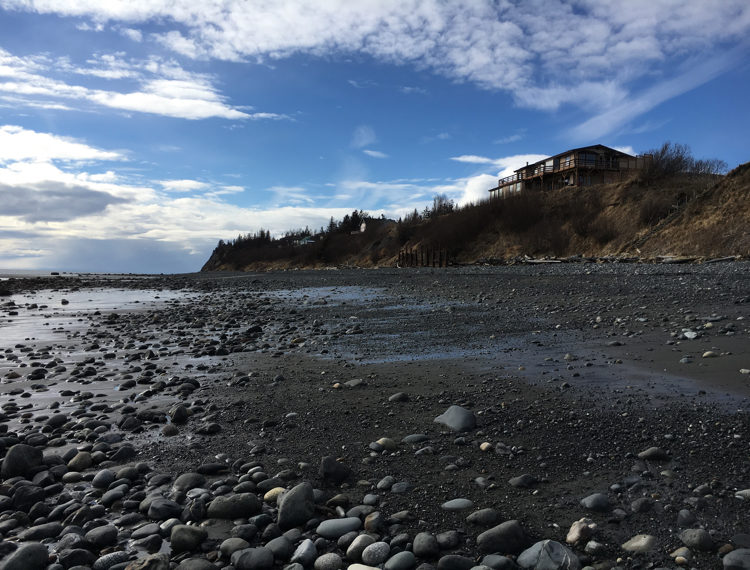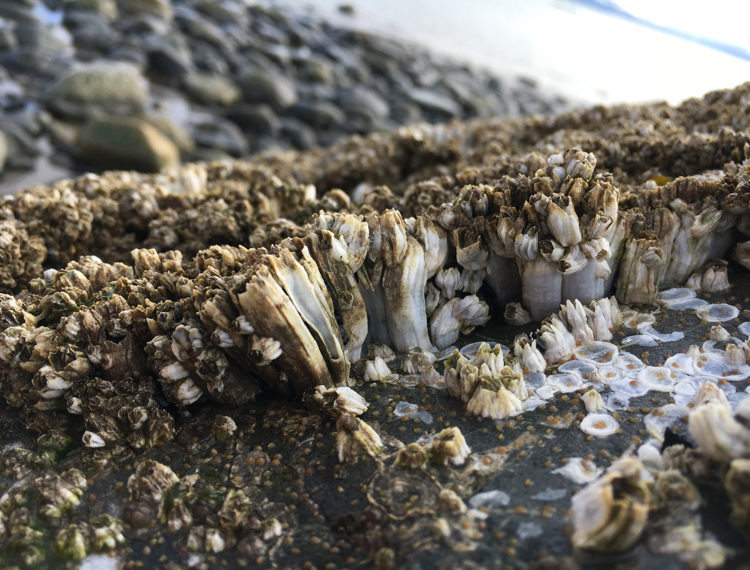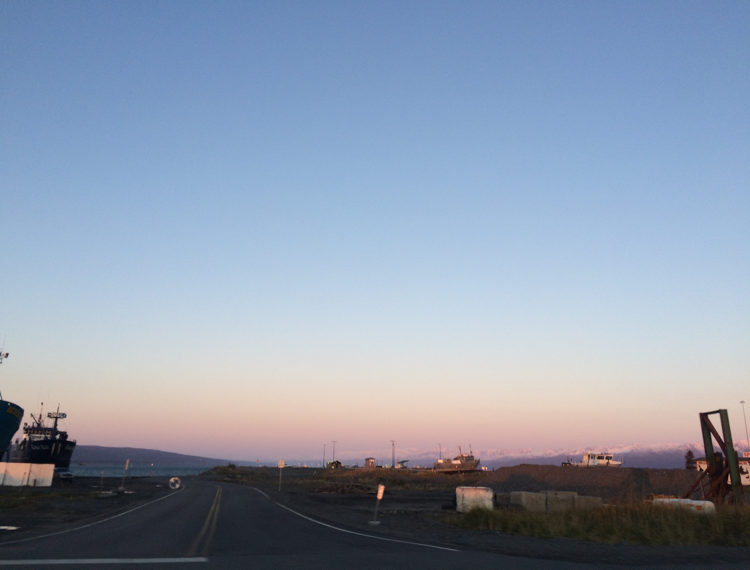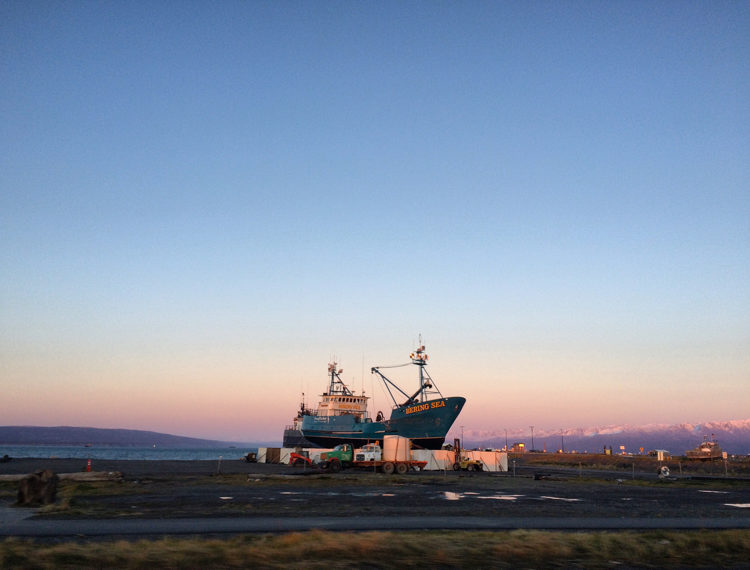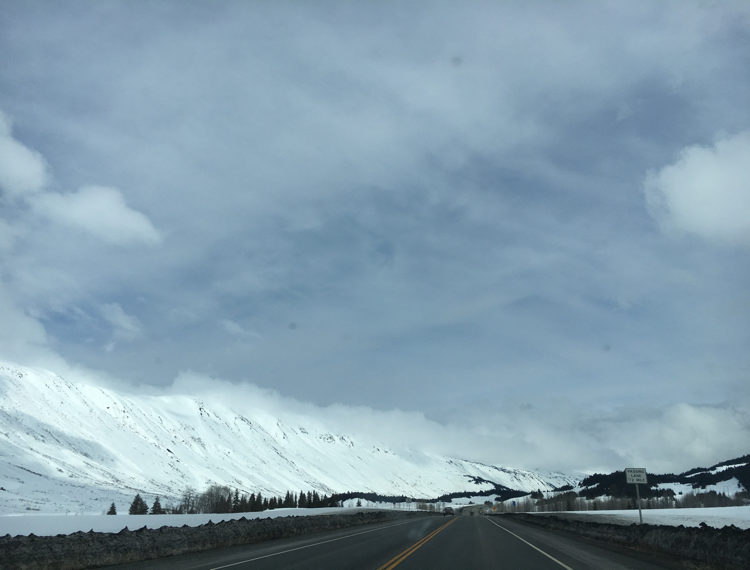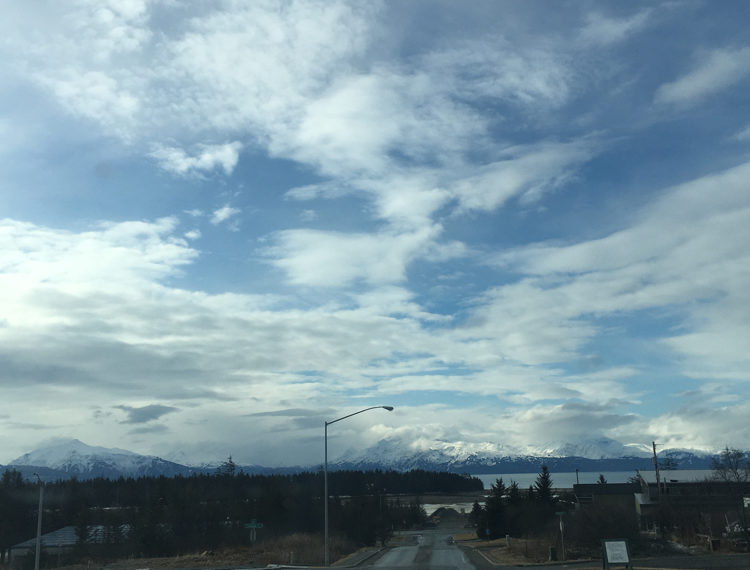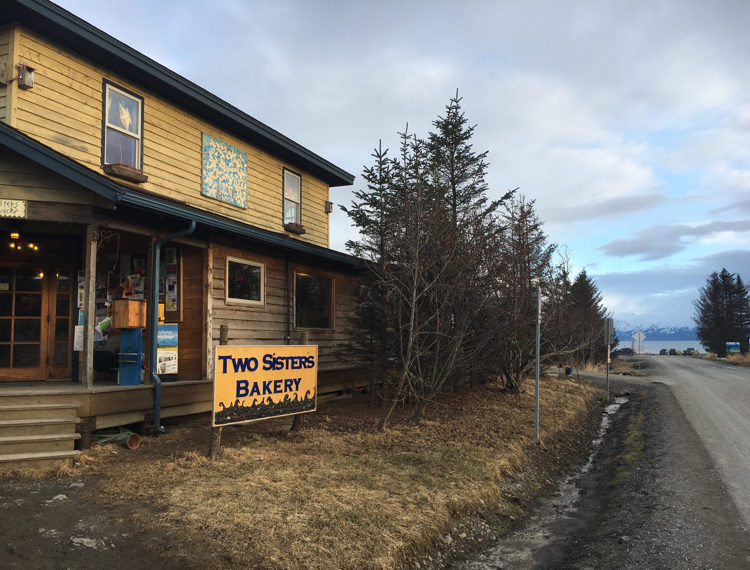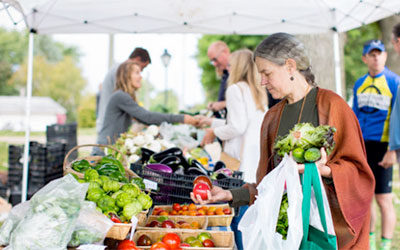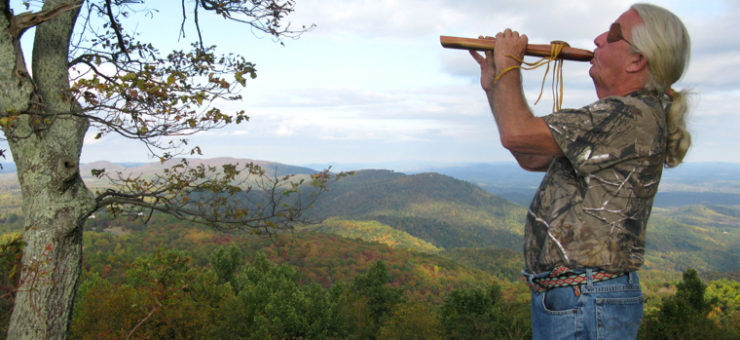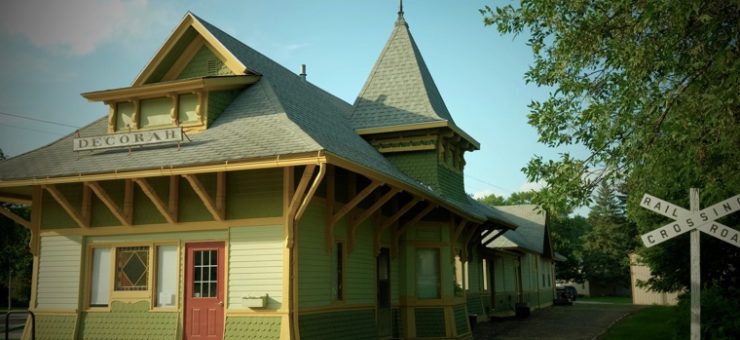Though reachable by plane and boat, there is only one way to get to Homer, Alaska by car: the 138-mile Sterling Highway which diverges from the singular southbound route, the Seward Highway, 90 miles south of Anchorage. Driving the Sterling provides a spectacular tour of the varied geography of the Kenai Peninsula: aquamarine blue lakes rimmed with lush spruce trees give way to mountain passes, which in turn give way to rolling grassy knolls peppered with scrubby alpine brush and fireweed. The final leg of the journey from Anchorage to Homer is perhaps the most stunning. The landscape abruptly turns coastal; the air grows salty. Every few miles, perched precariously close to the lip of the bluffs that plummet down to the rocky shore, are whimsical structures— ramshackle seasonal get-aways belonging to those who crave the solitude and harsh beauty of such a landscape—built tall rather than wide, like lighthouses, to better see the sparkling waters of Cook Inlet through high, crooked windows. To the west, rising dramatically out of the water are the huge snow-capped peaks of the Alaska Mountain Range, including two active volcanoes, proud members of the Pacific Rim of Fire. Mount Redoubt, the highest peak at just over 10,000 feet, steals the show.
To call Homer “the end of the road” is not hyperbolic, as it truly is the terminus of the North American road system. The highway snakes down a steep hill through the gradual build-up of the town, scattered in an arc around Kachemak Bay. If you let momentum carry you, you will end up on the Spit, a narrow 4.5 mile gravel bar that extends into the bay. The Spit is home to ocean-themed boardwalk cafes, an idyllic harbor of bobbing fishing boats, and a long expanse of sandy beach.
For many people, Homer = halibut. Sport and commercial fishing are the backbone of Homer’s economy and important to the economic well-being of the state as a whole. In the summer months, the Spit is alive with activity. A constant stream of trucks pulling boats of all sizes roll in and out of the harbor. The beach becomes thick with campsites, humming with the din of people kept awake all night by the midnight sun. In the shallows of the bay, dipnetters wade up to their waists, holding on to the long metal rods with round, hula-hoop sized nets on the end, counting on a bounty of glittering pink salmon to swim into the nets on their frenzied run from the ocean.
But if fishing isn’t your thing, there is still plenty to do in Homer. Unlike other small towns in Alaska that are mostly seasonal, with an influx of people in the summer and ghost town status during the rest of the year, Homer has a year-round population of around 5,400. And when you go to such hubs as K-Bay Coffee or Alice’s Champagne Palace, you will see just how strong the heart of this community is beating. Entrepreneurship is strong in Homer. The majority of the businesses in town are family owned and operated. This, combined with a growing emphasis on local, sustainable agriculture, has made the food scene in Homer particularly delicious.
For breakfast or lunch, there’s the Fresh Sourdough Express or La Baleine Café on the Spit for hearty portions of fresh, organic fare. Another, more unassuming option, is Mike’s in the main part of town. Barely bigger than a garden shed, Mike’s is set back from the main drag, Pioneer Avenue. The brown cottage boasts lime green trim and a tiny deck with a couple tables and chairs, for when you prefer to eat alfresco or can’t nab one of the 10 seats offered inside. To the uninitiated, Mike’s looks like a claustrophobic sandwich dive, but really it’s a magical gem serving up gourmet tacos and shrimp po’boys and an amazing Sunday brunch (duck crepes!). Two Sisters Bakery is a great option for fresh baked goods. Their bread is baked daily and goes above and beyond the standard flavors, including potato and lavender wheat and challah. They also host an impressive dinner service with a rotating menu featuring seasonal ingredients with a heavy emphasis on local seafood. While the dining is fine, the atmosphere is kept casual—which, in Alaska, means Carhartts and ExtraTuf boots are more than acceptable attire. Set in a big, rustic, old house, the bakery and restaurant span the downstairs rooms and a three season porch.
Homer restaurants’ positive embrace of farm-to-table ethos, combined with a popular farmers market, spawned the state’s first Food Hub. Food Hubs are online marketplaces for locally grown, harvested, and produced foods and crafts. Vendors list their products online for consumers to order and pick-up at a local drop site on a weekly basis. Nationwide, Food Hubs are popping up to better connect people with sustainable food, and in turn help to build and support communities, preserve agricultural land, lower carbon footprints by decreasing food miles, and strengthen local economies.
If you’re looking to pass the time on a sunny afternoon, take a stroll along Bishops Beach to admire the Kenai Mountains in the distance and the lapping tides of Kachemak Bay, then head to Bunnell Street Arts Center. Founded in 1989 by a small group of artists, Bunnell Street evolved from a casual studio space into a dynamic community center, keen on fostering the arts through exhibiting, promoting and educating. The center hosts community events such as artist talks and, recently, a vocal harmony workshop. As noted in their mission statement, “culture is the commerce of this day,” and it is evident that Bunnell Street has been key in the enrichment of local creative culture.
Another testament to Homer’s cultural connectivity is the recent establishment of the Homer Folk School. In the tradition of Scandinavian “folkehøjskole,” folk schools offer a collaborative learning environment where individuals can teach hands-on skills of regional, cultural, or traditional importance to members of their community. Most classes take place at the Ageya Wilderness Center which offers a wide range of classrooms, a certified commercial kitchen, a shop, a high-tunnel for gardening, and yurts for lodging.
Homer has affectionately been called “the cosmic hamlet by the sea,” generating a mythology of good vibes and spiritual living. While it continues to draw the homesteaders, nomads, and spiritualists, of its formative years, it is also home to fishermen and women, cannery workers, deckhands, and regular folks besot with the rugged beauty of rural Alaska. The people of Homer—diverse in background and beliefs as they are—have built on the town’s original wellspring of “good energy” to cultivate a community bonded over a shared respect for the environment and a common goal of surviving the extremity of the seasons with a spirit of adventure, optimism, and fierce love for their home.
Quick Facts
Population: 425
Elevation: 2,493 feet
Avg Temp in January: 41/19
Avg Temp in July: 81/58
Known for: FloydFest, Crooked Road Music Trail, Sustainable Agriculture, Arts and Crafts, Appalachian Music, Folk Music

